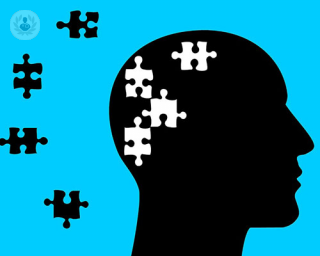EMDR (Eye Movement Desensitisation and Reprocessing)
Dr Renata Pires-Yfantouda - Psychology
Created on: 11-07-2022
Updated on: 12-11-2023
Edited by: Conor Dunworth
What is Eye Movement Desensitisation and Reprocessing (EMDR)?
EMDR is a new type of psychotherapy that can help patients process and overcome past experiences. It helps patients process the emotions and beliefs associated with traumatic events that happened in their past, and are causing them mental anguish or other negative mental health symptoms. It can allow patients to see these events from a new perspective, and thus lessen the negative mental health symptoms they are suffering from.
In recent years, EMDR has begun to be used to treat a myriad of mental health problems, including substance abuse disorders, panic disorders, and dissociative disorders.

Is EMDR a new treatment?
Yes, EMDR is a relatively new treatment. It was developed in the 1980s by American psychologist Frances Shapiro. Since its development, more than 20,000 practitioners have been trained in the use of EMDR.
How does EMDR work?
In a typical session of EMDR, a patient will be asked to focus on the traumatic memory that is causing mental anguish or other troubling symptoms. They will be asked to think about a belief that they hold about themselves in relation to this memory. For example, if they were a victim of physical abuse, they may believe “I deserved it”.
The patient must then think of a positive belief that they want to hold about themselves, such as “I am a good person worthy of love”.
The patient reviews the memory while focusing on something that creates rapid or bilateral eye movement. Often, patients focus on the therapist moving two fingers back and forth. This is repeated, in numerous sessions of EMDR, until the negative associations with traumatic memories become replaced by the new positive beliefs.
Who is a good candidate for EMDR?
EMDR therapy is typically used to treat patients suffering from post-traumatic stress disorder (PTSD). However, EMDR is also effective in treating eating disorders, panic attacks, anxiety, or addiction.
Research has shown that people who suffer from military-related PTSD are particularly responsive to EMDR treatments. People who find it difficult to talk about their past traumatic experiences are also good candidates for EMDR.
How do patients typically feel after an EMDR session?
Typically, EMDR should start to work after just a couple of sessions. The amount of mental anguish or distress that the traumatic memory causes should start to lessen, as the memories become desensitised.
However, in some cases, people may feel slightly worse after the first session, as the EMDR can reawaken some of the patient's unresolved memories or pain. This is only temporary. As the patient engages in more EMDR sessions, the traumatic memory will continue to be further desensitised as the negative feelings and beliefs are replaced with positive ones. This relieves the negative mental health symptoms the patient suffers from.
Is EMDR hypnotism?
No, EMDR is not hypnotism. Although they may first appear to be similar, there are some key differences. Perhaps the biggest difference is that during an EMDR session the patient never enters into a trance-like state of consciousness. Instead of entering this trance, the patient must remain hyper-focused on the external stimuli that are creating rapid or bilateral eye movement.

How successful is EMDR?
Numerous studies have shown EMDR to be a very effective treatment for PTSD. It has also been shown that trauma can be treated more quickly and effectively than cognitive-behavioural therapy.
In order for EMDR to be effective, fidelity to the treatment is very important. This is considered the gold standard in the clinical research that has shown EMDR to be an effective treatment for PTSD.
Does EMDR have any side effects?
EMDR can produce several possible side effects. These can include:
- vivid dreams or nightmares
- becoming more sensitive to emotions and physical sensations
- light-headedness
It is also possible that unresolved memories may emerge during or after an EMDR session, which can be quite distressing for the patient.
Can EMDR cure my trauma in one session?
No. The desired outcome of EMDR therapy is not to cure trauma. Instead, the desired outcome is to desensitise the patient to the traumatic memory and thus reduce the negative symptoms they experience.
Although some patients may respond very well to the treatment and their symptoms may diminish significantly after just one session, this does not mean their PTSD has been cured.



